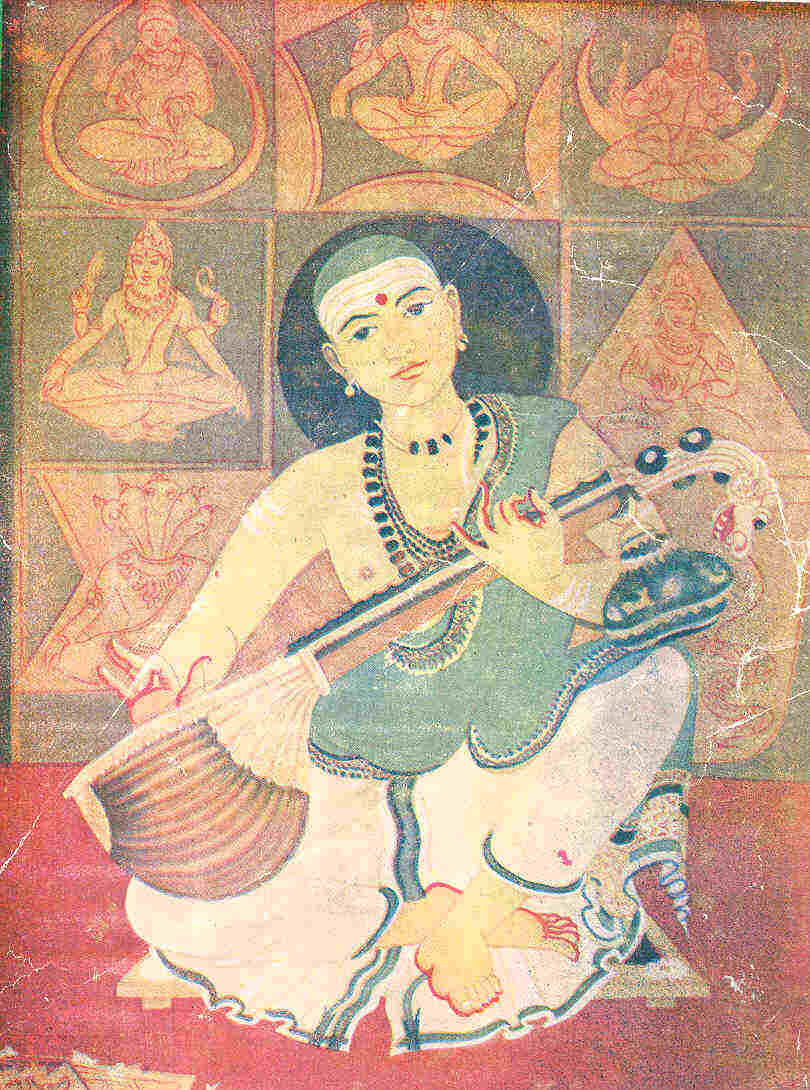Muthusvami Dikshitar (1775-1835), one of India's
foremost composers is often referred to as the eternal pilgrim.
He spent much of his life traveling, visiting shrines and
singing their praise in Sanskrit. His compositions reflect the
worship traditions and the stalapuranas of the various
temples that he visited.
The composition chintaye mahalingamurtim
in praise of Mahalingesvara in
Tiruvidaimarudur is one
of the two compositions written by Dikshitar in the raga
pharaju and it paints a succinct picture of the traditions
associated with the temple. The essence of the composition is
presented below.

This kriti describes Shiva
Mahalinga enshrined in madhyarjuna kshetra as one who
sparkles in the form of knowledge.
It is to be noted that the tamil name
Tiru idai marudur translates into Sanskrit as Madhya-arjuna
kshetra. The name is associated with the stala vriksha
(the sacred tree housed in the temple complex) is the arjuna
tree or the maruda maram. Arjuna is a herb
used in the Ayurvedic tradition for treating heart disease and
many other diseases.
Two other kshetras or shrines are
referred to as arjuna kshetras; one is the
mallikarjuna shrine at Srisailam Andhra Pradesh and the
other in the deep South Tiruppudaimarudur near Ambasamudram.
Madhya Arjuna is located in between these two shrines.
The kriti names Brihadkuchamba as
the consort of Shiva. It describes Shiva as one
who guides sincere devotees towards the easiest path of truth. (ati
samIpa ruju mArga darsitam; note here that the syllables
pa-ru-ju denote the name of the raga pharaju that the
kriti is composed in). Shiva the conqueror of time
is revered here as the vanquisher of antakA and the
bestower of salvation even to those ridden by their karma.
Shiva is surrounded by devas
such as Indra; he is said to have delivered salvation to
devotees such as Mukunda. His lotus like feet relieves
sorrow. He is the bestower of auspiciousness and is the essence
of compassion.
Such is the glory
of this temple that it is considered that some of the grand
temples in the vicinity constitute the parivara devata
shrines of Tiruvidaimarudur. For instance, this temple is
flanked by Tiruvalanchuli with
its grand temple dedicated to Vinayaka, the well known Swamimalai with
its revered shrine to Subramanya, Tiruvarur the
greatest of the Vitanka Stalams with Somaskandar,Tiruvavaduturai with
its shrine to Nandikeswarar, Sirkali with
its shrine dedicated to Bhairavar, Tiruseingnalur with
its shrine to Chandikeswarar, the Suryanar temple
with shrines to the nine celestial bodies Navagrahas,
Chidambaram with Nataraja as
the presiding deity and
Alangudi known for its Dakshinamurti shrine
respectively.
Dikshitar
describes (much of the) above with the madhyamakala
sahitya
Srikamalapura
somaskandam chidambaresvara natananandam
Srikalisa
bhairava spandam sivasvami saila guruguha spandam
The lyrics refer
to Bhairava as Kalisa and the phrase Sri-Kali
refers to the Shivastalam Sirkali.
A recording of this composition rendered by Vidita Kanniks
accompanies the visuals in the above video clip.